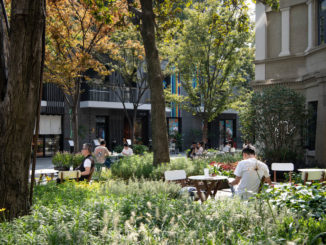The city of Cape Town known as the hosting of the 2010 World Cup and known for its amazing landscape including Table Mountain has been in drought for 3 years and is heading towards Day Zero when dam levels reach 13.5% and the taps will be turned off in a phased approach. The government has set water restrictions at Level 6b which restricts water to 50 Litres per person as the original Day Zero date was April 12, but through the efforts of city and residents to save water has delayed Day Zero several times and is now predicted to be 15 July 2018. The city has provided guides, calculators and a Day Zero dashboard to educate residents on how to reduce water use including:
- Only flush the toilet when necessary. Let the yellow mellow at home, work, school, gym, shops, etc.
- Take very short stop-start showers. Wet your body, turn off the tap, soap, then rinse quickly.
- Collect your shower, bath and basin water and re-use it to flush your toilet.
- Wait for a full load before running washing machines and dishwashers. The rinse water from some washing machines can be re-used for the next wash cycle.
- Use a cup instead of running taps in the bathroom or kitchen when brushing teeth, shaving, drinking, etc.
- Defrost foods in the fridge or naturally, rather than placing it under running water.
- Irrigation Prohibited
As many cities around the world face drought at different times in the last decade including Sao Paolo, Mexico City, Los Angeles, most large cities in Australia which have required governments to take action with education programs and incentive schemes for water storage (tanks), grey water systems along with education programs. The world and its major cities are facing the possibility of reduced or no water in the future as populations grow as people move towards cities. Before more cities reach crisis point we as landscape architects need to look at how we can avoid Day Zero and as landscape architects what can we do?
Design
- Utilising water design principles that capture water and replenish groundwater and aquifers often referred to as WSUD, SUDS, LiDs. (rain gardens, swales, wetlands, etc)
- Reduce points for water pollution by installing gross pollutant traps, retention ponds and other natural and mechanical elements to reduce waterway pollution.
- Using trees and plants with low water requirements
- Use pervious materials for paving (gravel, pervious/permeable pavements, etc)
- Design for the local conditions using local plants
- Specify soil additives to increase water retention
- Eliminate or reduce the size of swimming pools
- Specify low energy lighting or solar/battery systems to reduce energy requirements (some power plants use between 100-400 gallons of water per megawatt hour)
- Reduce areas of turf to reduce irrigation requirements
- Allow space for installing water storage (tanks or grey water)
Efficiency
- Design with plants with low water requirements
- Group plants based on water needs
- Using low-flow or subsurface irrigation that utilises water tanks or grey water
- Set irrigation times for after 19:00 or before 6:00
- Use mulch to reduce evaporation
- Ensure soils contain organic matter or inorganic matter to increase water retention
Storage
- Using above ground rain tanks (low cost for residential and schools)
- Including below ground storage under plazas and carparks (commercial, offices, etc)
- Specifying a rain or greywater system
- Creating (or Protecting) wetlands to purify and store water
Education
- Educate clients on the importance of water-efficient landscapes and the design principles that you can use to reduce their water usage
- Work with your local schools and communities organisations to educate them on water-efficient practices
- Provide notes in project Maintenance Manuals in relation to best times to irrigate (evening-early morning)
This list of improvements and design techniques is not exhaustive and as landscape architects, we should look at how we can assist at a local, state and national level. Many cities and governments water and planning authorities offer educational material for landscape architects and residents on best design practices to improve water efficiency. Landscape architects can assist in reducing the possibility for a water-stressed city, however, we also need to also work with cities in the urban design and planning initiatives to ensure that waterways are retained and protected and that they include water sustainable design principles into all legislation and projects.
As the world grapples with increasing densities and populations, therefore, increasing pollution and stress on water systems we as landscape architects need to take ownership of the issue in our professional and daily lives. Set yourself the Day Zero challenge and try to use only 50 litres(13.2/11 gallons) of water a day to understand the future many cities will face.
Editorial Written by Damian Holmes is the Founder and Editor of WLA.
He is also a registered Landscape Architect and has over 17 years experience as a landscape architect in Australia, Canada and China.
Cover Image Credit (Cape Town) | Flickr jglsongs



